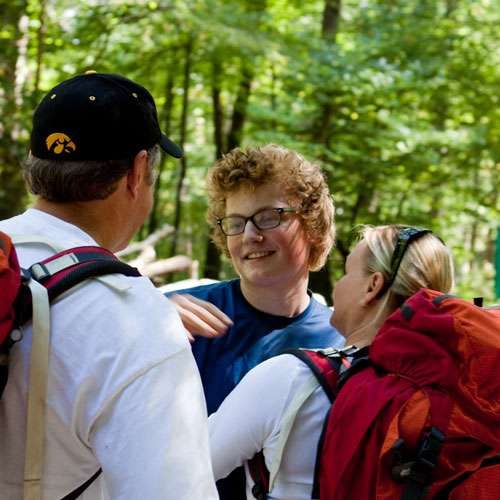As chillier weather sets into the Blue Ridge Mountains of North Carolina, it is Trails Carolina’s utmost concern to keep students feeling comfortable and warm while participating in a wilderness therapy teen winter camp in the great outdoors. During cooler months, we instill a variety of practices and techniques that help keep students and staff warm throughout their time in wilderness therapy.
Fueling The Internal Furnace
When it comes to keeping warm, we train staff and students to understand the concept that we are our own “furnaces”. At Trails Carolina, we help students and staff fuel their own internal furnaces with energy-filled food sources such as carbohydrates. Our nutrition plan for students is designed specifically to give them the fuel they need to keep warm in the winter.
Trapping in heat through winter clothing and gear
When the weather gets colder, we issue winter gear and clothing to all students and staff. This clothing is specifically created to trap heat in and prevent it from escaping. Winter gear and clothing issued to students include:
- Head coverings: To keep the head and face warm, we issue balaclavas and fleece hats to all students. This clothing is extremely important because 70 percent of heat from the human body escapes from the top of the head.
- Gear for extremities: For students’ hands, we issue liner gloves and fleece mittens to trap heat in. For their feet, students layer liner socks, wool polyester blend socks, and hiking boots. Students are also issued waterproof Neo’s as an extended outer layer over the boot in case of wet weather.
- Winter clothing: Winter layering begins with a base layer of thermal long johns and thermal shirts. Then comes the puffer jackets which contain a synthetic filling ideal for trapping heat in. After puffer jackets, students put on a fleece jacket that contains all of the heat from the layers beneath. On top of the fleece jacket, students wear a rain jacket that acts as a windbreaker and an additional layer to trap warmth. For their lower half, students wear thick pants above the long-john base layer and rain pants above that.
Staff regularly check to make sure students are practicing proper layering techniques and are trained to notice when a student looks cold.
Physical Activity Throughout The Day Keeps Students Warm
The multiple layers of clothing and gear help trap heat in and keep students warm. However, the layering system we have in place will not work if students don’t consistently participate in physical activity throughout the day.
Through physical activity such as hiking, walking around, and jumping jacks, students burn the fuel they’ve gained through energy-filled foods and circulate their internal warmth. This helps them heat up faster and prevents heat from leaving their bodies. Staff are trained to keep students moving throughout the day. Additionally, staff wear the same clothing and gear as students. If they are feeling cold, it is very likely students are feeling cold too. That’s a good cue for them to get students moving to help warm up.
Fires and Sleeping Arrangements
In addition to constant physical activities and layering techniques, students and staff light fires throughout the day to keep warm and toasty. While sitting around the fire, staff encourage students to take physical activity breaks such as going to get more firewood and jumping jacks to keep their internal warmth flowing.
At night, students sleep in sleeping bags that are designed to keep students warm in up to -20 degree weather (which very rarely happens in North Carolina). Additionally, we add liner bags to the sleeping arrangements which add another 5 degrees of warmth to the sleep system. Students sleep on top of a sleeping pad and are wrapped in a plastic layer called a canoe, which also helps trap in warmth at night.
While on the expedition, 3-4 students share tents where they share body heat and mutually heat the tent. At the Sky Valley campus, students sleep in yurts that contain barrel stoves. Staff members load the stoves with wood throughout the night to warm the structures. At base camp, students sleep in heated cabins.
At Trails Carolina, it’s very important to us that students are healthy and warm throughout their time at our program. If you have additional questions about the measures we have in place during the winter months, please contact our admissions team at 800-975-7303.
Get started today
Contact us today to learn how Trails Carolina can help your family
Trails saved my daughter’s life. Amanda is an amazing human and a brilliant therapist. I am so grateful to her, Science Steve, and the other wonderful people who could reach my daughter at a time when I could not.
Margot Lowman August 2022
Great life changing experience for our son. After becoming addicted to gaming during covid he was very depressed. At Trails he experienced the wilderness, Science Steve, learning survival skills and top notch therapy and support etc… I highly recommend! This gave our son and our family a renewed family bond full of love and excitement about his bright future.
Winnifred Wilson July 2022
Outstanding clinical work and superb staff! There’s a great culture at this company and it shows with how they engage with families/clients.
Kristin Brace June 2022
Discover If Trails Is The Right Program For Your Child
Take our short online assessment and help us better understand how we can help your family.




